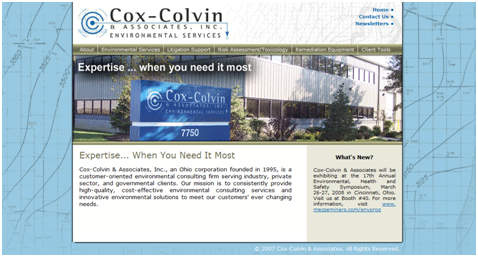Improper storage of road salt can contaminate groundwater and surface water and leave the owner/operator liable for damages. Recently, several salt storage piles have been identified by Ohio EPA as the source of high chlorides in public and private drinking water supplies. If you store salt, there are steps you can take to eliminate or limit its potential to contaminate surface or groundwater.
Read More>>
Thursday, February 28, 2013
Wednesday, February 27, 2013
State Regulators Look to EPA for Guidance on Long-Term Post Closure Care at Subtitle C Facilities
Many hazardous waste facilities around the country quickly are approaching the end of their 30 year post-closure period. What happens after 30 years, and on what criteria is the decision made? The regulations aren't clear. State regulators are looking for guidance from EPA before the onslaught begins.
Read More>>
Read More>>
Thursday, February 21, 2013
PA DEP Establishes Process for use of Mine Influenced Water in Natural Gas Extraction
Thousands of miles of streams throughout the eastern US coal region are impacted by mine influenced water (MIW) from centuries of mining activities. The Pennsylvania Department of Environmental Protection recently published a white paper providing a framework for using MIW in the natural gas extraction process, thereby partially satisfying the need for water used in hydraulic fracturing and providing a long-term disposal option for MIW.
Read More>>
Read More>>
Labels:
mine influenced water,
MIW,
natural gas extraction,
PA DEP
Wednesday, February 20, 2013
In-Situ Microcosm Studies: An Effective Multi-Purpose Tool for Groundwater
In-situ microcosm studies can be performed within a monitor well to provide valuable information throughout various phases of the cleanup project. Contaminant, geochemical, and microbial results obtained from the studies allows the practitioner to have a better understanding of subsurface conditions and to make more informed decisions pertaining to monitored natural attenuation and bioremediation.
Read More>>
Read More>>
Thursday, February 14, 2013
New Policies Change Pennsylvania DEP Permitting Process
The way in which the Pennsylvania Department of Environmental Protection (DEP) processes and approves permits significantly changed in November 2012 with the issuance of two policies. The policies are intended to streamline the permitting process across all bureaus of the DEP. However, there are some concerns among industry and the public regarding the clarity and effectiveness of the policies.
Read More>>
Read More>>
Wednesday, February 13, 2013
Background Metals Concentrations in Ohio's Urbans Soils - A Progress Report
In April 2009, Ohio EPA's Voluntary Action Program (VAP) staff announced the formation of a working group to evaluate background concentrations of metals and other substances in urban soils. The primary goal of the evaluation is to streamline the efforts of Volunteers seeking a Covenant Not to Sue under the VAP on properties intended for unrestricted future use within urbanized areas. However, the evaluations also will be beneficial to others completing risk-based cleanups under other environmental programs. Initial data sets are in. Let the evaluations begin!
Read More>>
Read More>>
Labels:
background metals,
Covenant Not to Sue,
Ohio VAP,
urban soil
Tuesday, February 12, 2013
Clean Water Act Violations: Lessons Learned
Recent Federal action against an oil and gas (O&G) company in West Virginia highlights the importance of being aware of Clean Water Act obligations during the O&G exploration and production process.
Read More>>
Read More>>
Labels:
Clean Water Act,
CWA,
oil and gas industry,
violations
Friday, February 8, 2013
EPA's Revised Vapor Intrusion Guidance
EPA's Office of Solid Waste and Emergency Response (OSWER) had long promised to release the final version of the Vapor Intrusion (VI) guidance by the end of November 2012 - exactly ten years after releasing the draft guidance. They didn't make it. But EPA has released a draft copy of the VI guidance to state agencies, and Cox-Colvin has had a chance to review it.
Read More>>
Read More>>
Friday, February 1, 2013
Cox-Colvin Staff Member Completes Wetland Delineation Training
In early November 2012, Jake Elder of Cox-Colvin completed an intensive 38-hour Army Corps of Engineers (ACOE) Wetland Delineation Training Program which satisfies the requirements to delineate wetlands per the accepted protocols of the ACOE. This training enhances Jake's extensive academic background in wetland soils and previous training on the Ohio Rapid Assessment Method (ORAM) for wetlands. Jake's experience and updated training will allow Cox-Colvin to better assist clients with wetland delineation and permitting issues.
Labels:
ACOE,
Army Corps of Engineers,
ORAM,
permitting,
wetland,
wetland delineation
Subscribe to:
Posts (Atom)





